#Power BI Free Tutorials
Explore tagged Tumblr posts
Text
How good are you at Power BI ?
Power BI is a powerful business analytics tool that allows you to visualize and analyze data from a variety of sources. By the end of this tutorial , you will have a solid understanding of how to use Power BI and able to create your own reports with ease. Our trainers are highly qualified, they have given their best to simplify the topics. Power BI is a business analytics service that enables you to see your data through a single pane of glass. Live Power BI dashboards and reports include visualizations and KPIs from data residing both on-premises and in the cloud, offering a consolidated view across your business. Power BI Desktop provides a drag-and-drop exploration of your data and a library of interactive visualizations while publishing to the Power BI service. Subscribe and watch the latest product news and updates, demos, and webinars as well as the latest training videos for Power BI. We want to ensure that our learning module will help millions of people, because entire course is free of cost. In this step by step tutorial , learn how to use Microsoft Power BI in just some time.
0 notes
Text
What is the cost of free power bi training course?
Introduction
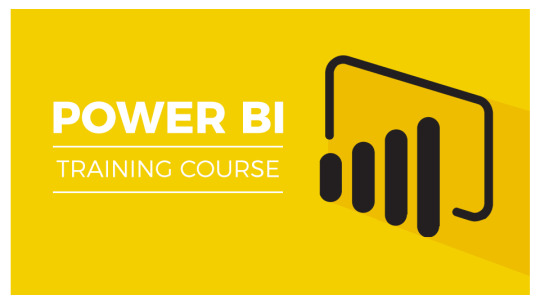
They say nothing in life is truly free and in the world of tech literacy, this word could not be more accurate. When you are eyeing a free Power BI training course, you are not just looking at a price label of$ 0; you are stepping into an ecosystem with its own unique set of trade- offs, limitations, and hidden investments.
What Does" Free" Really Mean in Online Learning?
The word free frequently lures eager learners. But in online education, free generally translates to limited access, lack of support, or announcement-heavy content. occasionally," free" means" free trial," where access is pulled down just as you’re getting the hang of effects.
Retired Costs of Free Power BI Courses
While your portmanteau may remain untouched, you will still be paying — in time, attention, and frequently frustration. numerous free courses warrant structured progression, streamlined content, or deep dives into complex Power BI functionalities.
Time Investment The Cost You Do not See
Learning Power BI is not commodity you master overnight. Free courses may stretch your timeline by offering deficient modules or vague explanations. This means further hours of tone- exploration and troubleshooting.
Free vs Donated crucial Differences in Content Depth
Free courses tend to cover the basics dashboard creation, introductory DAX functions, and data importing. Donated courses, on the other hand, go further — into real- time analytics, Power Query M Language, and report robotization. You get what you pay for.
Who Offers Free Power BI Training Courses?
Several estimable names offer free Power BI training Microsoft Learn, edX, Coursera( inspection mode), and indeed YouTube generators who’ve erected entire series for newcomers. But not all content is created equal.
Platforms furnishing Quality Free Training
Microsoft Learn – Direct from the generators, with regularly streamlined content.
LinkedIn Learning( Free Trial) – Professionally created modules with a 30- day free window.
YouTube – Channels like Guy in a cell and Enterprise DNA offer in- depth perceptivity.
These platforms are great starting points but flash back , support and structure may be minimum.
How to estimate a Free Power BI Course
Look for
Course syllabus
Reviews from factual druggies
frequency of updates
educator credibility
Community or forum support
These factors will help you separate the gems from the general.
Do Free Courses Offer instrument?
utmost free courses do not offer instruments unless you upgrade to a paid league. And in numerous diligence, that instrument can be the difference between a message and a silent rejection.
The Limitations of Free instruments
Indeed when free courses offer a instrument, its value may be limited. Employers frequently fete instruments from paid, accredited platforms or sanctioned Microsoft mates more seriously.
Free coffers Offered by Microsoft
Microsoft provides sanctioned literacy paths that are fully free. These modules are modular, freshman-friendly, and regularly streamlined to match product changes. It’s a goldmine — if you’re tone- chastened enough to stick with it.
YouTube and MOOCs Are They Enough?
YouTube tutorials and MOOCs are fantastic for visual learners. But the major strike? No feedback, no live Q&A, and frequently no roadmap. You’re basically your own schoolteacher.
Learning Community and Support Free vs Paid
Free courses infrequently offer robust learner communities. In discrepancy, paid courses frequently come with forums, disharmony waiters, or Slack groups essential for resolving dubieties snappily and networking with like- inclined professionals.
Comparing Free Courses in Different locales
Power BI Training Course in Singapore
Power BI Training Course in Singapore- grounded platforms frequently mate with government enterprise( like Chops Future) to offer subsidized or low- cost Power BI courses. Free options are introductory, but you can make a foundation then.
Power BI Training Course in Sydney
Power BI Training Course in Sydney, numerous institutions give introductory shops for free as teasers to their full- fledged programs. Free community classes are also held in libraries or tech capitals.
Power BI Training Course in Melbourne
Power BI Training Course in Melbourne has a strong tech education ecosystem. Free meetups and data community events frequently include Power BI crash courses, but structured literacy still leans toward paid results.
When is It Worth elevation to a Paid Course?
Once you've hit the ceiling with free coffers, or if you’re preparing for job interviews or instrument examinations, investing in a paid course becomes essential. You gain mentorship, real- world systems, and a structured path.
Conclusion Free as a Starting Point, Not the Destination
A free Power BI training course is a important stepping gravestone. It can introduce you to crucial generalities, educate you how to make simple dashboards, and indeed spark a career change. But it’s not a one- stop result. Consider it your helipad and do not vacillate to invest when it’s time to soar.
1 note
·
View note
Text
How to Switch From a Non-Tech Background to Data Science: A Step-by-Step Guide
Data science is one of the most exciting and rapidly evolving fields today. With businesses relying heavily on data to drive decisions, professionals who can extract insights from complex datasets are in high demand. If you come from a non-tech background, the thought of transitioning into this realm might feel daunting, but it’s achievable!
Imagine being able to tell compelling stories with numbers, help organizations make informed choices, or even predict future trends. The world of data science opens doors not just for tech enthusiasts but for anyone willing to learn and adapt. This guide will walk you through how to switch gears and embark on an exhilarating career in data science—a journey that starts with understanding foundational skills and takes you through job opportunities tailored for beginners like yourself. Let’s dive in!

Understand What Data Science Is
Before diving in, it's essential to understand what data science entails and how it fits into today’s business and technology landscape. At its core, data science is about using data to derive insights and solve problems. It combines skills from statistics, computer science, and domain expertise to analyze data, build models, and support decision-making.
This doesn’t mean you need to be a math wizard or a coding prodigy. What matters most is your ability to learn and apply concepts to real-world problems.
Identify Your Transferable Skills
You might be surprised to learn that many skills from non-tech backgrounds—like communication, problem-solving, and domain knowledge—are highly valued in data science.
For example:
Marketing professionals bring customer insight and analytical thinking.
Finance experts understand data-driven decision-making.
Educators often excel in structured thinking and clear communication.
Project managers know how to coordinate, report, and evaluate performance.
Recognizing these transferable skills can boost your confidence and help you position yourself effectively when job hunting.
Learn the Core Concepts and Tools
To succeed in data science, you need to build a foundation in key areas like statistics, programming, and data visualization. Here’s what to focus on:
Statistics and Probability Basics
Understanding the fundamentals of statistics is crucial for interpreting data and making sound decisions. Topics like distributions, correlation, regression, and hypothesis testing are essential.
Python or R Programming
Learning a programming language like Python or R will empower you to manipulate data, run analyses, and build predictive models. Python is generally recommended for beginners due to its simplicity and widespread use.
Data Manipulation and Visualization Tools
Tools like Pandas (Python library), SQL (for querying databases), and Tableau or Power BI (for data visualization) are industry standards. These tools help you clean, explore, and present data in a meaningful way.
Take Advantage of Online Courses and Resources
Numerous free and paid resources are available specifically for beginners from non-tech fields. Here are a few reputable platforms to consider:
Coursera – Great for structured courses from top universities.
edX – Offers both free and certificate programs.
DataCamp – Interactive coding tutorials tailored to data science.
Kaggle Learn – Free micro-courses and datasets for hands-on practice.
Start small. Begin with introductory courses and gradually move to more complex topics.
5. Build Real Projects to Apply What You Learn
Hands-on projects are the fastest way to cement your learning and showcase your abilities to future employers. Try these ideas:
Analyze a dataset from Kaggle or a public data repository.
Build a dashboard showing business metrics.
Predict outcomes (e.g., sales, customer churn) using regression models.
Choose projects related to your background to highlight your domain knowledge and show how it translates into data insights.
Network and Connect With the Data Science Community
Engaging with the data science community through meetups, forums, and social media can accelerate your growth and open doors. Join:
LinkedIn groups related to data science
Reddit communities like r/datascience
Local data science meetups or online events
Hackathons and datathons to practice collaboratively
Connecting with others can lead to mentorship, feedback, and job opportunities.
8. Prepare for the Job Market
With your skills and portfolio in place, it's time to start tailoring your resume, practicing interviews, and applying for roles. Focus on:
Entry-level positions like data analyst, junior data scientist, or business intelligence analyst
Keywords in job descriptions (use them in your resume)
Storytelling during interviews—explain your career change, projects, and learning journey confidently
Practice with mock interviews and behavioral questions to build your comfort level.
9. Consider Further Education or Certifications
While not always required, a structured program or certification can provide credibility and fill in knowledge gaps. Look into:
Google Data Analytics Certificate (Coursera)
IBM Data Science Professional Certificate (Coursera)
Harvard’s Data Science MicroMasters (edX)
Certifications can help bridge the gap, especially if you lack a technical degree.
10. Stay Consistent and Keep Learning
The field of data science evolves rapidly, so continuous learning and curiosity are key to long-term success. Subscribe to newsletters, follow industry blogs, and experiment with new tools and techniques.
Treat learning like a habit, not a phase.
Final Thoughts
Breaking into data science from a non-tech background is challenging, but with perseverance, strategic learning, and confidence, it's a realistic and rewarding career move. Leverage your unique strengths, stay consistent, and remember—everyone starts somewhere.
Your past doesn’t define your potential in data science. You do.
#CareerSwitch#DataScienceJourney#NonTechToTech#CareerChange#DataScienceForBeginners#Upskill#LearnDataScience#Reskill#BreakingIntoTech#TransitionToDataScience#DataScienceGuide#TechCareerChange#DataScienceLearningPath#DataScienceTips#SwitchToTech
0 notes
Text

How to Start a Career in Data Analytics Without a Tech Background.
Let’s be honest—"data analytics" sounds like something only coders and spreadsheet wizards can do, right?
But here’s the truth: you don’t need to be a tech genius to start a career in data analytics. In fact, some of the best data analysts come from fields like marketing, finance, education, or even hospitality. What they all have in common? A curiosity to understand data and a willingness to learn.
This essay is for you if you've ever wondered, "I like solving problems, but I don't know where to start."
🧠 What Is Data Analytics, Really?
Think of data analytics as detective work with numbers. Businesses generate tons of data—sales numbers, website clicks, customer feedback—and they need someone to find the patterns, answer questions, and help them make better decisions.
A data analyst’s job is to: Collect and clean data Analyze trends Create reports and dashboards Help teams make smarter choices No complex coding needed to start—just clear thinking, basic tools, and some practice.
🌱 Step-by-Step Guide to Get Started Without a Tech Background
Start with the Mindset, Not the Tools First, believe this: you belong in data. Don’t let jargon intimidate you. You don’t need a computer science degree. What you do need is:
Curiosity Problem-solving skill A love for learning That’s your foundation.
Learn the Basics (One Step at a Time) Start small. You don’t need to jump into Python or SQL on Day 1.
Begin with:
Excel/Google Sheets – Learn formulas, pivot tables, basic charts.
Data literacy – Understand terms like KPI, metric, dashboard, etc.
Free courses – Try YouTube tutorials or beginner courses on platforms like Coursera, Udemy, or LinkedIn Learning.
📌 Tip: Try analyzing your own budget or workout data to practice.
Master Key Tools Slowly Once you’re comfortable, move on to the key tools data analysts use:
Tool Why Learn It? Excel Industry standard for data cleaning SQL Helps you pull data from databases Power BI / Tableau Used for creating visual reports and dashboards Python (optional) Helpful, but not required initially
Don’t try to learn everything at once—pick one and stick with it until you're comfortable.
Work on Real-Life Projects You don’t need a job to get experience. Use free datasets from sites like:
Kaggle.com Data.gov OurWorldinData.org
Start a project like: Analyzing COVID data in your region Creating a dashboard of your expenses Studying trends in Netflix shows or YouTube videos
Then write about your process on LinkedIn or Medium. It shows initiative and builds your portfolio.
Get Certified (Optional but Helpful) Certifications can give you a confidence boost and look great on a resume. Look into:
Google Data Analytics Certificate Microsoft Power BI Certification Coursera / Udemy beginner courses
They’re not required, but they help you stand out.
Apply for Entry-Level Roles (Even if You Don’t Tick Every Box) You don’t need to meet 100% of the job description to apply.
Look for roles like:
Junior Data Analyst Business Analyst Reporting Analyst Operations Analyst
Highlight your soft skills: communication, problem-solving, and attention to detail. Show how you’re learning the tools. That matters more than a perfect résumé.
💬 Real Talk: What Makes a Good Data Analyst (That Has Nothing to Do With Tech)? You ask “why” a lot
You enjoy making sense of chaos You’re patient with details You like telling stories with numbers Sound like you? Then you're already halfway there.
🎯 Final Words Starting a data analytics career without a tech background isn't just possible—it’s happening every day. With the right mindset, consistent effort, and a little curiosity, you can absolutely break in.
And remember: everyone was a beginner once.
If you’re ready to take the first step, our Data Analytics program at Ntech Global Solutions is built for career changers just like you. We teach you real-world skills, not just theory—so you can go from “I don’t know where to start” to “I got the job!”
#data analytics#data analyst course in delhi#data analyst training#code#python#programming#sql#excel#power bi#tableau
1 note
·
View note
Text
How to Start a Career in Data Science with No Technical Background
If you’ve ever thought, “Data science sounds fascinating, but I don’t have a tech background,” you’re not alone — and you’re definitely not out of luck.
Here’s the truth: you don’t need to be a coder, a statistician, or a data engineer to start a career in data science. What you need is curiosity, consistency, and the right approach.
This blog will walk you through exactly how someone from a non-technical field — like marketing, finance, operations, education, or even arts — can break into the world of data science.
Step 1: Understand What Data Science Actually Is
Start by learning the basics of data science — what it means, how it's used, and the kind of problems it solves.
Think of data science as a combination of three core elements:
Math and Statistics – to make sense of data
Programming – to work with and process that data
Business Understanding – to know which problems are worth solving
The best part? You can learn all of this at your own pace, even if you’re starting from zero.
Step 2: Start with Tools You’re Familiar With
If you’ve used Excel or Google Sheets, you’ve already worked with data.
From there, you can gradually move to tools like:
SQL – to pull data from databases
Python – to manipulate, analyze, and visualize data
Power BI or Tableau – to create dashboards and visual stories
There are beginner-friendly platforms and tutorials available to help you learn these tools step-by-step.
Step 3: Focus on Real-World Applications
Don’t try to memorize formulas or force yourself to master every algorithm. Instead, focus on how data science is used in the real world:
In marketing to measure campaign performance
In HR to predict employee attrition
In finance to detect fraud
In supply chain to optimize delivery routes
Relating concepts to your current domain makes learning not only easier but more enjoyable.
Step 4: Work on Projects, Not Just Theory
Even if you’re still learning, try to work on mini-projects using publicly available datasets from Kaggle or government portals.
For example:
Analyze sales data and build a forecast model
Explore customer churn patterns for a telecom company
Create a dashboard showing COVID-19 trends
These projects will become part of your portfolio, making you stand out when applying for jobs.
Step 5: Keep Learning, Keep Growing
The field of data science evolves fast. Stay updated by:
Following data science communities on LinkedIn
Watching free courses and tutorials
Reading blogs and case studies
Connecting with mentors or peers online
Ready to Get Started?
If you're serious about breaking into data science, there's no better time than now — and no better way than starting with a free beginner-friendly course.
🎥 Check out this free YouTube course on Data Science that explains core concepts, tools, and techniques — all in simple, easy-to-follow language:
👉 Click here to watch the full course
You don’t need a tech degree — just a desire to learn and take the first step. Your data science journey starts today!
0 notes
Text
This blog serves as a beginner-friendly guide to the world of Power BI, emphasizing its growing importance across industries. It highlights how Power BI helps professionals — not just data analysts, but also marketers, project managers, and finance teams — turn raw data into impactful, interactive dashboards.
A key takeaway is that learning Power BI isn't as complex as it may seem. With just basic Excel knowledge, a problem-solving mindset, and an understanding of data models, anyone can get started. The blog also outlines multiple learning pathways, including free YouTube tutorials, certifications, and hands-on practice, making it accessible for self-learners and course-takers alike.
Most importantly, it stresses how mastering Power BI significantly boosts employability, leading to roles like Data Analyst, BI Developer, and Power BI Trainer. Overall, the article is motivating and actionable for anyone aiming to enhance their data visualization skills and career prospects.
0 notes
Text

Deploying a Project Using Power BI Pro 🚀
Power BI Pro allows you to share, collaborate, and manage Power BI reports securely within an organization. Here's how you can deploy a project using Power BI Pro:
1️⃣ Prepare & Publish the Report
Develop your Power BI report in Power BI Desktop.
Connect to data sources, clean data, and create interactive visualizations.
Click "Publish" and select your Power BI workspace.
2️⃣ Configure Data Refresh & Security
Set up scheduled refresh to keep reports updated.
Use Data Gateway for on-premises data sources.
Configure Row-Level Security (RLS) to restrict data access.
3️⃣ Share & Collaborate
Share reports within your organization using Power BI Pro licensing.
Create and distribute Power BI Apps for easy access.
Embed reports in Microsoft Teams, SharePoint, or web applications.
4️⃣ Monitor & Optimize
Track usage and performance through the Power BI Admin Portal.
Optimize report performance using Performance Analyzer.
Manage permissions and data governance policies.
🔹 Power BI Pro ensures seamless collaboration, secure sharing, and efficient data-driven decision-making! 🚀
For Free Power BI Tutorial Visit-https://www.tpointtech.com/power-bi
#PowerBI 📊#PowerBIPro 🚀#DataAnalytics 📈#BusinessIntelligence 💡#DataVisualization 🎨#PowerBIReports 📑#MicrosoftPowerBI 🔥
1 note
·
View note
Text
Tom Hanks, Margaret Brennan, and the European Ministers -- Reveal It All

Three recent but completely unrelated events illustrate the deranged hatred of President Donald Trump and his supporters continuing now even into a second decade. And yet the venom only further marginalizes the left.
In its too-long 50th anniversary spectacle, Saturday Night Live offered a skit in which marquee actor Tom Hanks did an impression of what the left thinks is a supposedly Neanderthal Trump supporter.
The episode was NBC's tele-version of the recent Obama-Hillary Clinton-Biden vocabulary of cheap MAGA disparagement: clingers, deplorables, irredeemables, chumps, dregs, semi-fascists, and ultra-MAGAs.
Most of those stereotyped props were evident in Hanks' character. He was wearing a red MAGA hat (real and not the fake versions of Jussie Smollett's wild and sinister imagination).
Hanks sounded off as a superstitious evangelical, a slow-speaking Southern twanger, and a poorly dressed slob.
And of course, the SNL writers insisted that he play the gratuitous racist. So, Hanks, as a clueless Black Jeopardy contestant, initially refused to even shake the hand of the African-American, assumed intellectually and morally superior, game show host.
We are supposed to believe the Hanks caricature is in contrast with progressives -- usually represented in society as the bi-coastal enlightened, well-spoken, and snappily dressed.
Perhaps the SNL crowd thought the counterpart to Hanks' MAGA sluggard was the recent hard-left, Democratic standard-bearer -- the eloquent former Vice President Kamala Harris of mesmerizing word-salad fame?
Aside from the reality that Trump captured a record number of African-American male voters, nearly split the Hispanic vote, and made gains with Asian- and Jewish-Americans, he also won massive defections from Wall Street and Silicon Valley entrepreneurs.
So, does SNL, Tom Hanks, or the left have any idea why it lost the popular vote due to such a diverse group of Democrat apostates?
Democrats should ask: Who is truly slow-witted? Is it the stumbling Tom Hanks caricature or the real Joe Biden and his ilk?
The latter bequeathed Americans an open border, 12 million illegal aliens, hyperinflation, two theater wars abroad, mega-trillion-dollar deficits, and the Green New Deal that impoverished the middle classes of all races.
At about the same time, Secretary of State Marco Rubio appeared on CBS's Face the Nation. He was immediately pressed by host Margaret Brennan, the epitome of the supposedly sophisticated, hip, left-wing journalist, and thus the converse of the Hanks caricature.
Yet when pressing Rubio about the recent dress-down speech of Vice President JD Vance to the European ministers, Brennan thought she would draw on her historical wisdom to confound the supposed Trump megaphone.
Did Vance not know, Brennan demanded of Rubio, that he was lecturing Europeans about their unfortunate abandonment of free expression and speech? And in Germany of all places, she intoned -- the very place, she insisted, where the Nazis once weaponized free speech to conduct the genocide!
It took Rubio about a nanosecond to clue the historically illiterate Brennan that the Nazis never allowed any free speech.
It was not excessive or even crude free speech that caused the Holocaust, but precisely the complete absence of all sorts of dissenting views in the marketplace of ideas.
Ironically, it was precisely Brennan's own defense of censoring "hate speech," "disinformation," and "misinformation" that the Nazis used to brand as extreme and unacceptable any view contrary to their own.
Next, the stunned European ministers in Munich, of course, sat aghast at Vance's tutorial.
None refuted what he was saying, namely that European elites' efforts to delay or cancel elections that might bring national conservative populists to power are contrary to the European enlightenment.
The use of weaponized, selective law enforcement to go after peaceful anti-abortion protestors, but not known violent Muslim illegal immigrants, is not only contrary to a free society but suicidal.
But Vance had a deeper subtext to his remarks.
The left-wing European elite fear even more than they hate the rising populist pushback.
The European apparat knows their own past two decades of massive illegal alien influxes, disarmament, deindustrializing, crashing fertility, green mandates, high taxes, crushing regulations, asymmetrical trade tariffs, and suppression of free speech and dissent were precisely what created the populist backlash.
The growing counter-revolution was not because of bogeyman charges of "racism," "Islamophobia," or "xenophobia," much less "hate speech."
The real culprit was bankrupt policies that not only did not work but impoverished the entire European Union middle classes.
So, the cure to restore European influence and prestige abroad and prosperity and security at home is not more censorship but more debate, dissent, and fresh ideas.
All that transparency might jump-start the economy, encourage entrepreneurialism, ensure national security, and return Europe to a civil, safe -- and influential -- society.
Sometimes Trump haters prove to be his best allies. Their venom shows us they either lack common sense or intelligence or both.
Such was the case with Tom Hanks, Margaret Brennen, and the European ministers.
0 notes
Text
How to Link Power BI with MySQL Database
Data is a big thing today. In order to design your next big business move, having the correct data at the correct time is of utmost importance. And due to that 80% of businesses are spending on data analytics to stay ahead of the game
If you link your MySQL database directly to Power BI, you can see data in real-time. Sounds incredible, isn't it?
Automating syncs can save you 50% of time used for manual reporting.
In this tutorial, I'll take you through how you can create an integration between MySQL and Power BI and give you some real-world examples that'll make your analytics life a whole lot simpler without writing a single line of code!
Why Integrate Power BI with MySQL?
Before jumping into the steps, let’s quickly talk about why this integration is worth your time. Both Power BI and MySQL are powerhouse tools in the data world:
Power BI: It is a data visualization tool with dynamic reports and dashboards that make dat-driven storytelling possible.
MySQL: A super popular, open-source database that can handle massive amounts of data.
When you integrate Power BI MySQL, you experience the best of both: MySQL's rock-solid data storage with Power BI's incredible visuals. Envision real-time insights, reports automated, and a hundred times smoother workflow—without toggling between platforms.
Data integration challenges 40% of the organizations, but due to Konnectify, you know setting it up is really not a hassle!
Step-by-Step Guide on How to Connect MySQL to Power BI
Let's take this step by step so you'll be good to go in no time.
What Do I Need to Connect Power BI to MySQL Database?
Active Power BI and MySQL accounts.
MySQL ODBC Connector to serve as the intermediary between Power BI and MySQL database.
A Konnectify account to manage the magic of automation.
How to Download MySQL Workbench for Power BI Integration
Ensure that you have MySQL Workbench installed for convenient handling of your MySQL database. You can obtain the MySQL software download from the official website.
How to Automate Data Sync Between MySQL and Power BI Using Konnectify
Here's where Konnectify makes it easy:
Step 1: Sign in to your Konnectify account.
Step 2: Select MySQL from the app marketplace.
Step 3: Create a trigger such as "New data entry in MySQL."
Step 4:Create an action like “Create row in Power BI dashboard.” This way, updates in MySQL automatically appear in Power BI service—hands-free.
Step 5: Customize your workflow with Konnectify’s visual builder and hit "Activate."
Just like that, you’ve got a live connection between Power BI and MySQL.
How to Install MySQL ODBC Connector for Power BI
Go to the MySQL website and download MySQL for Windows, if you haven't done so. Then, install the MySQL ODBC Connector—it's what allows Power BI to talk to your MySQL database.
You can use a detailed documentation by Microsoft on the Power BI MySQL Connector here.
How to Connect MySQL Database to Power BI Desktop
Launch Power BI Desktop.
Navigate to Get Data and choose MySQL Database.
Enter your server credentials and details.
Click Connect to fetch tables from your MySQL.
5 Game-Changing Use Cases for Power BI and MySQL Integration
Still not sure how this combination can assist? Let's see some practical scenarios where Power BI MySQL integration can revolutionize your business.
1. How to Automate Financial Reports in Power BI Using MySQL Data
Establish data query automations to have Power BI extract new data from the MySQL community server and create real-time financial dashboards. This way, your finance team will always be working with the most up-to-date figures since real-time data analytics has the potential to increase operational efficiency by as much as 20%.
2. How to Analyze Sales Data in Power BI by Connecting to MySQL
Sales figures can be a treasure trove if you understand how to interpret them. Linking your MySQL database to Power BI, let's business analysts easily visualize statistics such as customer acquisition and churn rates.
3. How to Monitor Inventory in Real-Time Using Power BI and MySQL
Inventory management is a pain. But with MySQL and Power BI report builder, you can create dashboards that track stock levels in real-time and even send alerts in Power BI when your inventory falls below minimum stock.
4. How to Track Customer Support Metrics in Power BI Using MySQL
Monitoring customer support metrics? Integrate MySQL studio with Power BI to see support ticket metrics such as response times and resolution rates by creating automated dashboards in Power BI so you can monitor trends and ITSM spend.
5. How to Enhance Project Management by Integrating MySQL with Power BI
Streamline project management by synchronizing MySQL and Power BI with automations to alert project managers and project engineers in case any tasks are behind schedule so that proactive measures can be taken.
How Do I Automate MySQL Data Sync in Power BI Dashboards?
Create a workflow to update Power BI whenever a new record is found in MySQL. This will enable you to have your reports always synchronized with the latest data.
Konnectify is no-code automation and integration software, allowing companies to link more than 150 apps to automate workflows—all in one location.
Konnectify for Power BI and MySQL Integration
No one enjoys exporting and importing data manually for hours. Konnectify links other just like how it links MySQL to Power BI with these awesome features~
Try Power BI + MySQL Connector for Free
Frequently Asked Questions (FAQs) on How to Integrate Power BI with MySQL
1. Can I Integrate Power BI with MySQL Without Coding?
Yes! Using Konnectify, you can establish a no-code integration of Power BI and MySQL. Simply connect the apps, define your triggers, and let the automation handle the rest.
2. How Do I Have Real-Time Updates in Power BI from MySQL?
Install Konnectify to automate syncs. Any updates in MySQL are reflected immediately in your Power BI dashboards—no stale data.
3. How is Konnectify beneficial to use with Power BI and MySQL?
Automate the entire process, achieving accuracy in data and time savings. It is the ideal solution for Power BI reporting automation with MySQL data.
1 note
·
View note
Text
What is Power BI Training?
Introduction to Power BI
In a data-driven world, Power BI shines as the light for turning raw numbers into useful insights. Microsoft has created this powerful business analytics solution that allows users to visualize their data and share insights with their organization or embed them within an app or website.
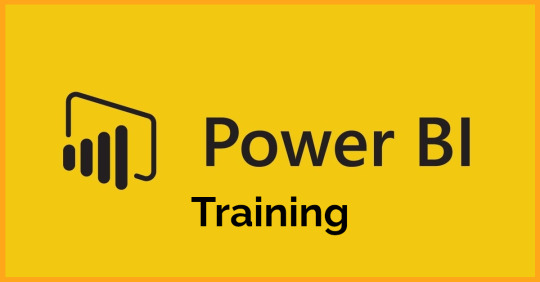
The Evolution of Business Intelligence Tools
From cumbersome spreadsheets to cloud-driven dashboards, the world of Business Intelligence (BI) has come a long way. Mere reporting is unseated by posh, real-time visualization.
Why Power BI is Leading the Pack
What makes Power BI unique is its user-friendly interface, hassle-free integration with other Microsoft applications, and vibrant community support. It's not only a tool—it's an elegance and functionality-wrapped data revolution.
What is Power BI Training?
Power BI training is a systematic training program that educates people to utilize Power BI for data analysis and reporting efficiently. It encompasses theoretical concepts, hands-on exercises, and practical case studies to make learners data wizards.
Basic Elements of Power BI Training
An extensive training program encompasses:
Data loading and transformation
Data modeling and relationships
Visualization methods
Utilization of DAX (Data Analysis Expressions)
Publishing and sharing reports
Who Should Attend Power BI Training?
Any data hunger can learn—business analysts, IT, marketers, and even entrepreneurs. No experience in coding? No problem. Power BI training is easy to use but robust enough for the pro.
Important Features Addressed in Power BI Courses
Training addresses:
Connecting to multiple data sources
Creating custom visuals
Automating data refresh
Integration with Excel, SQL Server, and more
Mobile responsiveness
Hands-On Learning: An Essential Component of Training
The top courses provide hands-on labs where students get their hands dirty with actual datasets. The objective? Confidence. Students leave not only knowing how Power BI functions but also mastering how to make it function for them.
Real-Time Data Visualization and Reporting
Power BI excels in real-time analytics. Throughout training, students learn how to create dashboards that update automatically, keeping decision-makers in the know.
Understanding DAX and Power Query
DAX and Power Query are the brains behind Power BI’s brawn. Training demystifies these languages so users can perform powerful calculations and transform messy data into clean, structured insights.
Power BI Training in Washington
The capital is abuzz with data-driven opportunities. Power BI Training in Washington is high in demand due to the existence of federal agencies, tech startups, and non-profits waiting to harness data for impact.
Power BI Training in San Francisco
At the center of innovation, Power BI Training in San Francisco provides you with an edge. With thousands of startups and tech companies looking for data talent, it's a gold rush for anyone seeking to upskill.
Power BI Training in New York
From Madison Avenue to Wall Street, Power BI Training in New York is a springboard to senior positions in operations, marketing, and finance. The city's high-pressure business environment requires real-time insights on data—and Power BI provides just that.
Online vs In-Person Training: What Works Best?
Both modes have their charm. Online offers flexibility, while in-person provides direct mentorship. Your choice depends on learning style, availability, and budget.
Choosing the Right Training Provider
Look for providers with industry-recognized instructors, real-world projects, and up-to-date course content. Bonus points for communities and post-training support.
Cost and Duration of Power BI Training
Prices vary widely—from free tutorials to high-end bootcamps. Most certification-oriented courses last between a few days to a couple of weeks, depending on depth and intensity.
Success Stories from Power BI Learners
From switching careers to bagging promotions, many learners have transformed their professional lives through Power BI training. Their common thread? The courage to learn something new and the right guidance to get there.
Final Thoughts: Is Power BI Training Worth It?
Absolutely. Whether you're chasing data-driven decision-making or a six-figure salary, Power BI training is an investment in your future. In a digital world, those fluent in data hold the real power.
0 notes
Text
Power BI: How Easy is it to Learn?
Power BI is known for being one of the most accessible and user-friendly business intelligence tools, making it an excellent choice for both beginners and experienced data analysts.
For those looking to enhance their skills, Power BI Online Training & Placement programs offer comprehensive education and job placement assistance, making it easier to master this tool and advance your career.

Whether you're just starting your data analysis journey or looking to enhance your skills, Power BI offers a relatively low barrier to entry. Here's a breakdown of what makes Power BI easy to learn:
1. Intuitive User Interface
One of the main reasons Power BI is easy to learn is its simple, intuitive interface. If you’ve worked with Microsoft tools like Excel, Power BI will feel familiar. The drag-and-drop features and straightforward layout allow users to quickly get hands-on with creating reports and visualizations. You don’t need to be an expert in coding or data modeling to get started with basic functions.
2. Quick Data Integration
Power BI makes it easy to import data from various sources such as Excel, databases, cloud storage, and even social media platforms. Beginners can quickly load and start working with data without needing to go through a complex setup process. The platform also has automatic data relationship detection, reducing the need for manual configuration.
3. Pre-Built Templates and Visuals
For beginners, Power BI offers pre-built templates and a wide variety of visualization options. Whether you're creating bar charts, line graphs, or heatmaps, you can simply drag and drop the fields into the desired visuals. This ease of use allows you to start creating visually appealing reports quickly, without having to worry about complex formulas or designs. It’s simpler to master this tool and progress your profession with the help of Best Online Training & Placement programs, which provide thorough instruction and job placement support to anyone seeking to improve their talents.
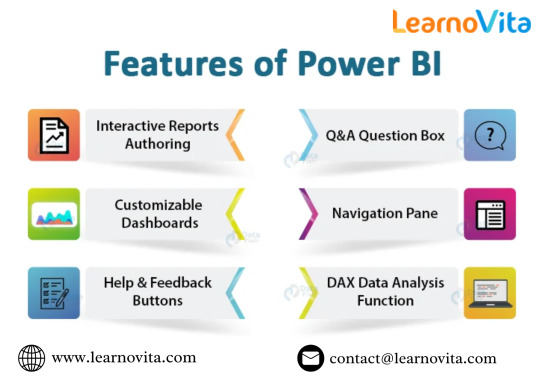
4. Extensive Learning Resources
Power BI provides a wealth of free resources to help you learn the tool. Microsoft offers detailed documentation, tutorials, and videos that cater to all levels of expertise. The Power BI community is also very active, with forums, blogs, and online groups where you can ask questions and share ideas. Whether you’re looking for beginner tips or advanced techniques, there are plenty of resources to support your learning.
5. Gradual Learning Curve
While Power BI is easy to get started with, it also offers opportunities to deepen your skills over time. As you become more comfortable with the basics, you can dive into more advanced features such as data modeling, creating custom DAX (Data Analysis Expressions) formulas, and automating workflows with Power Query. This gradual progression ensures you can grow your expertise without feeling overwhelmed.
6. Affordable and Scalable
Power BI’s free version allows you to explore and practice the tool without making any financial investment. As you learn and become more proficient, you can transition to the Pro or Premium versions, which offer additional features and capabilities. This scalability ensures you can continue using Power BI as your needs evolve.
Conclusion:
Power BI is an excellent tool for beginners, offering a user-friendly interface, easy data integration, and a wealth of learning resources. Its gradual learning curve makes it approachable for new users while still providing advanced features for those looking to expand their skills. Whether you're a business owner, analyst, or just getting started in data visualization, Power BI provides an accessible and powerful platform to help you turn data into actionable insights.
0 notes
Text
Key Principles of Effective Graphic Design: Typography, Color Theory, and Layout
Image editing in graphic design:Common Questions Answered
1.Which app is mostly used for graphic design?
Adobe Photoshop is the most widely used app for graphic design, known for its powerful editing capabilities and versatility in creating images, graphics, and digital art. Other popular graphic design tools include Adobe Illustrator for vector graphics, Canva for user-friendly templates, and CorelDRAW for illustration. Each app caters to different design needs, but Photoshop remains the industry standard for many professionals.
2. What are graphic tools?
Graphic tools are software applications or platforms used to create, edit, and manipulate visual content. They include design software like Adobe Photoshop and Illustrator, online platforms like Canva, and data visualization tools such as Tableau or Microsoft Power BI. These tools enable users to craft graphics, infographics, illustrations, and other visual representations for various purposes, including marketing, presentations, and social media. Graphic tools often feature user-friendly interfaces and a range of templates and features that cater to both beginners and experienced designers, enhancing creativity and communication through visual means.
3. What techniques do graphic designers use?
Graphic designers employ various techniques, including typography for effective text presentation, color theory to evoke emotions, and composition principles to create visually appealing layouts. They utilize software like Adobe Creative Suite for digital designs, while hand-drawing skills enhance creativity. Designers also apply visual hierarchy to guide viewer focus, and utilize grids for balanced design structures. Incorporating vector graphics ensures scalability, while understanding branding helps maintain consistency. Additionally, techniques like layering, texture application, and contrast usage further enhance their designs, allowing for unique and engaging visual communication.
4. Which type is best in graphic design?
The best type in graphic design often depends on the project's context and audience. However, sans-serif fonts like Helvetica and Arial are commonly favored for their modern, clean look and readability, especially in digital formats. Serif fonts like Times New Roman or Georgia are ideal for print materials that convey tradition and reliability. Ultimately, the choice should align with the brand's identity, the message being communicated, and the overall aesthetic of the design. Experimenting with various typefaces can help find the best fit for specific design needs.
5. How to start graphic design for beginners?
To start graphic design as a beginner, begin by understanding the basic principles of design, such as color theory, typography, and composition. Familiarize yourself with design software like Adobe Photoshop, Illustrator, or free alternatives like Canva and GIMP. Explore online tutorials and courses to build your skills. Practice by creating simple projects, like logos or social media graphics. Analyze designs you admire and seek feedback on your work. Join design communities to connect with others and gain inspiration. Consistent practice and experimentation will help you grow as a designer over time.
Visit: VS Website See: VS Portfolio

Visit: VS Website See: VS Portfolio
0 notes
Text
Microsoft Power BI Tutorial
0 notes
Text
AI-Powered Excel Alternatives to Boost Your Productivity
Explore seven Excel AI tools that revolutionize data management and boost productivity for teams.

Tired of spending hours just trying to make sense of some complicated formula in Excel, or having to watch tons of tutorials just to automate simple tasks? Well, the good news is that artificial intelligence has stepped into the arena, changing how we handle spreadsheets by introducing powerful alternatives that make data manipulation faster, smarter, and much easier. This blog introduces seven AI tools revolutionizing spreadsheets and automating tasks that used to take hours in Excel.
1. CortexSheet
CortexSheet is an AI add-on in Google Sheets that automatically removes the headache from mundane spreadsheet work. Using simple formulas like =CORTEX and =CORTEX_CLASSIFY, you can automate tasks like data cleaning, categorization, and bulk operations with just a few clicks. Whether you're managing eCommerce data, screening resumes, or doing translations, CortexSheet makes it easy for non-technical users to harness the power of AI. It's a versatile tool with pre-built templates across industries from content marketing to research, and its flexible pricing makes it accessible to everyone, from individuals to large enterprises.
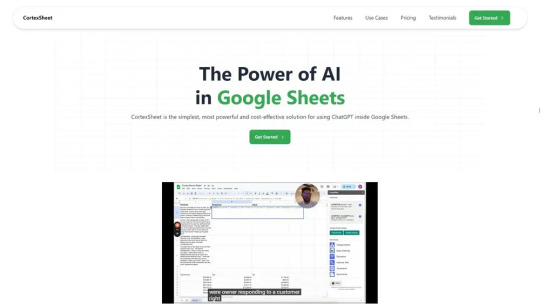
2.Rows
Another powerful alternative is Rows, a next-level spreadsheet platform built for team collaboration. It works seamlessly with popular tools like Google Analytics, Notion, and HubSpot, letting you easily import data and use AI to analyze and transform it. With features like text classification, dataset summarization, and sentiment analysis for customer feedback, Rows is ideal for teams working on marketing, social media, and product reviews. Plus, it makes sharing insights simple by turning your data into sleek, interactive reports—making collaboration effortless.
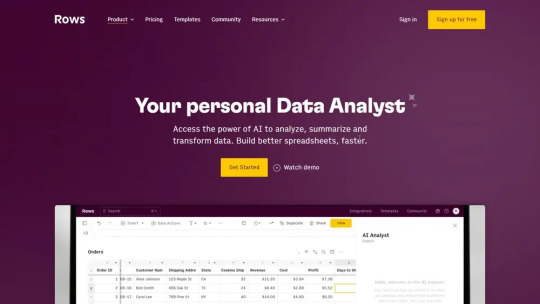
3.GPT Excel
GPT Excel is the perfect tool for those who love Excel but want to boost productivity with AI. It automates tasks like generating formulas, creating SQL queries, and writing VBA or Google Apps Scripts. Trusted by over 300,000 users and with 4 million formulas generated, GPT Excel simplifies workflows, from complex calculations to data summaries. It’s available in multiple languages and offers a free tier, making it a great option for both beginners and experienced users looking to save time and effort.If your goal is to turn data into stunning visual reports.
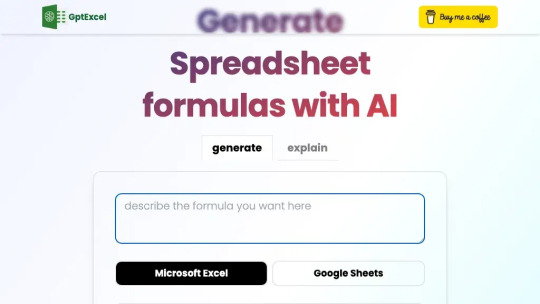
4.Zebra BI
Zebra BI is the tool you need. Renowned for its robust data visualization features, it integrates smoothly with Power BI, Excel, and PowerPoint to transform complex datasets into clear, actionable insights. Whether you're a financial analyst or a project manager, Zebra BI allows you to create dynamic charts, interactive reports, and dashboards that simplify data-driven decision-making. With handy features like dynamic comments and drill-through options, you can easily uncover the story behind the numbers—all without requiring any programming skills.
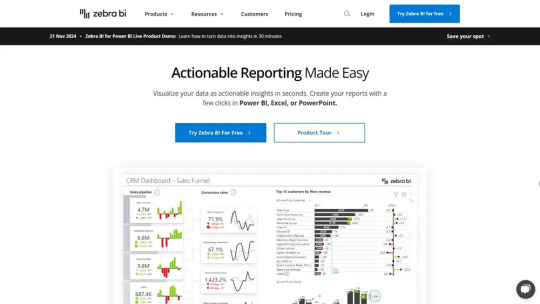
5.Orkes
Orkes is a transformative tool for developers focused on managing workflows efficiently. Created by the team behind Netflix Conductor, it streamlines workflow orchestration with its AI-driven platform. Designed for businesses looking to enhance their development processes, Orkes integrates microservices and API orchestration to create scalable workflows. With an intuitive user interface for building visual workflows, robust version control, and built-in security features, it enables developers to quickly upgrade existing applications. This makes it ideal for fast-paced industries like healthcare, telecom, and finance, where innovation and scalability are essential.

6.Wallo
WalloAI is an AI-powered tool that simplifies working with spreadsheets. Instead of manually searching through data, you can ask questions directly to your spreadsheet in plain language. It also generates and explains formulas effortlessly. WalloAI supports VBA scripts, making it easy to automate tasks and create custom macros. With flexible pricing, including a free tier, it’s perfect for beginners and advanced users alike, helping everyone work faster and smarter with their data.
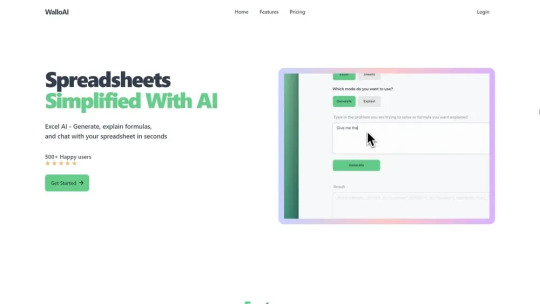
7.Ampler
Lastly, there’s Ampler, a platform that enhances how organizations utilize Microsoft Office. By automating repetitive tasks in PowerPoint, Excel, and Word, Ampler frees users to focus on creativity and productivity. Whether you're aiming to keep a consistent visual style in presentations or streamline workbook formatting, Ampler provides customized solutions to boost your efficiency.
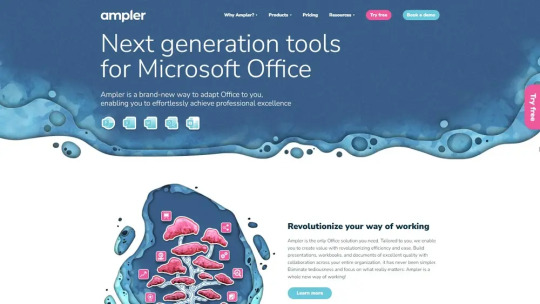
It integrates smoothly with your existing IT setup and complies with organizational standards, making it an invaluable resource for large teams and enterprises. In summary, if you’re looking to enhance your spreadsheet experience beyond what Excel offers, these AI tools have you covered. From CortexSheet’s automated categorization to Ampler’s seamless Office integration, these tools not only simplify your work but also boost productivity, allowing you to focus on what truly matters. Try them out and see how AI can transform your day-to-day tasks.
For more blogs like this: thenextaitool.com/blog
0 notes
Text
"A Beginner’s Guide to Getting Started with SAS"
Getting started with SAS can be a smooth process with the right approach. Here’s a beginner’s guide to help you begin your SAS journey:
Install SAS Software: First, obtain the SAS software through a licensed provider or explore free versions like SAS University Edition. Follow the installation instructions provided to set up the software on your computer.
Familiarize Yourself with the Interface: Once installed, open SAS and explore its interface. Get to know the main components: the Program Editor, Log, Output, and Results Viewer.
Learn Basic Syntax: Start with the basics of SAS programming syntax. Understand how to write simple SAS programs, including DATA and PROC steps, to manipulate and analyse data.
Use Tutorials and Resources: Take advantage of online tutorials, SAS documentation, and community forums. These resources provide valuable guidance and support for beginners.
Practice with Sample Data: Apply what you’ve learned by working with sample datasets. This hands-on practice will help reinforce your understanding and build confidence.
Following these steps will set a solid foundation for your SAS skills and prepare you for more advanced learning.SAS Online Training Institute, Power BI, Python Pune, India (saspowerbisasonlinetraininginstitute.in)
#sas training institute#top sas training institute india#sas course online#top sas training institute pune
0 notes
Text
Your Step-by-Step Guide to Launching a Career as a Data Analyst
If you've ever considered becoming a data analyst, you're not alone. The demand for data-driven decision-making has made this career path both rewarding and exciting. But how do you get started? What skills are crucial? This blog will guide you through the process, drawing insights from the Data Analytics Course in Chennai.

1. Understand the Role of a Data Analyst
A data analyst is responsible for gathering, processing, and interpreting data to help businesses make informed decisions. They work with numbers, charts, and reports to uncover patterns and insights that can shape better strategies.
2. Master the Basics of Data Analysis
Begin by learning the core concepts of data analysis. This involves understanding how to work with different types of data (such as numerical and categorical) and learning how to draw meaningful conclusions from it. You can find beginner-friendly courses on platforms like Coursera, edX, or YouTube.
3. Get Proficient with Spreadsheets
Spreadsheets, like Microsoft Excel or Google Sheets, are essential tools for any data analyst. They allow you to efficiently organize, sort, and analyze data. Start by learning basic functions like SUM, AVERAGE, and VLOOKUP, then advance to more complex features like pivot tables and data visualization.
4. Learn a Programming Language
Familiarity with a programming language like Python or R can significantly streamline your data analysis work. These languages allow you to automate repetitive tasks, clean data, and perform complex analyses. Websites like Codecademy and DataCamp offer interactive courses that are perfect for beginners.
If you want to learn more about Data Analytics, consider enrolling in an Data Analytics Online Course. They often offer certifications, mentorship, and job placement opportunities to support your learning journey.
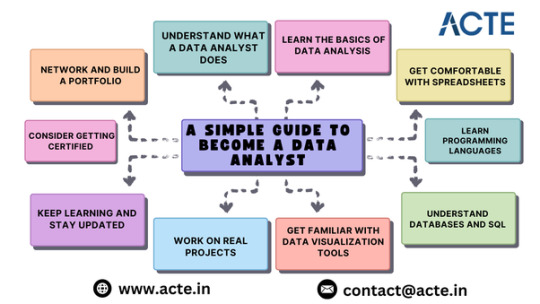
5. Understand Databases and SQL
SQL (Structured Query Language) is a crucial skill for any data analyst. It enables you to retrieve and manipulate data stored in databases, allowing you to access the exact information needed for analysis. Start with free tutorials on websites like W3Schools or Khan Academy.
6. Explore Data Visualization Tools
Data visualization is about presenting your findings in a way that’s easy to understand. Tools like Tableau, Power BI, and Google Data Studio are excellent for creating charts, graphs, and dashboards. Many of these tools offer free versions or trials to help you get started.
7. Gain Practical Experience with Real Projects
While theory is important, hands-on experience is essential. Work on real-world projects by analyzing online data sets or assisting a friend’s small business. Websites like Kaggle provide free data sets and challenges that help you practice and sharpen your skills.
8. Stay Informed and Keep Learning
The field of data analysis is always evolving. Stay up to date with the latest trends and tools by reading blogs, joining online communities, and attending webinars. Websites like Towards Data Science, Analytics Vidhya, and Medium offer valuable articles and tutorials to keep you informed.
9. Consider Earning Certifications
Though not always required, certifications can enhance your credibility. Consider certifications like Google’s Data Analytics Professional Certificate or Microsoft Certified: Data Analyst Associate to help you stand out in the job market.
10. Build a Network and Portfolio
Networking with other professionals can lead to new job opportunities. Attend meetups, join LinkedIn groups, and connect with fellow data analysts. Additionally, create a portfolio showcasing your work to demonstrate your skills to potential employers.
Conclusion
Becoming a data analyst takes time, dedication, and continuous learning, but it’s a rewarding journey. Start with the basics, practice regularly, and stay current with new developments. With perseverance, you’ll be well on your way to a successful career in data analysis.
1 note
·
View note